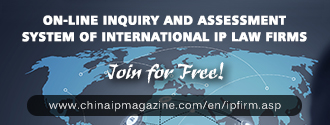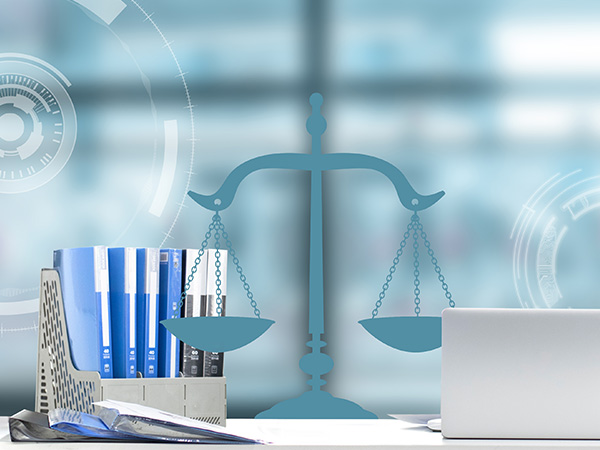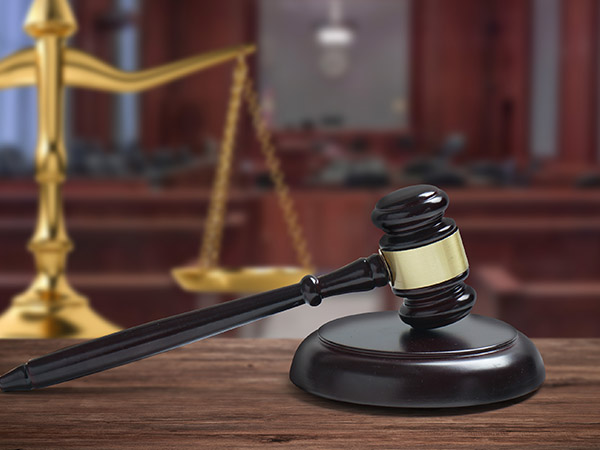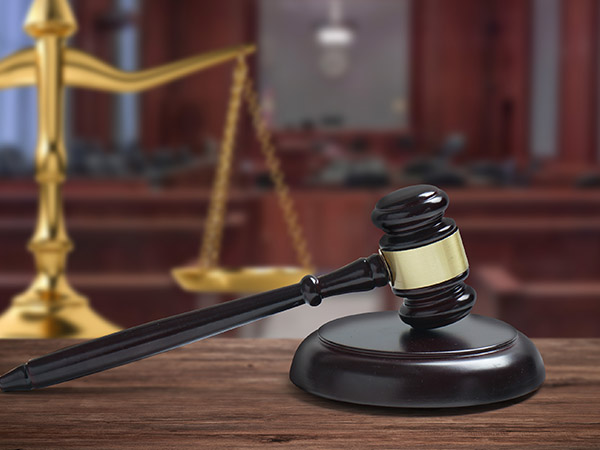I. Judicial introduction of the Doctrine of Equivalents
In patent infringement litigations, it is rarely found that all the elements of an accused device coincide with the limitations of an asserted patent claim. In most cases, one or a few of the elements in the accused device may not be "literally" identical with the claim limitations of the asserted patent. This is because a patent infringer, while intending to trade on another's patented technology, would hope to evade infringement liabilities. Therefore,truly "literal" infringement, i.e., complete imitation of another's patented product or slavish copying infringement is rare; whereas infringement is more frequently found by equivalent. How does the court determine as to whether an accused device whose technical elements are "literally" different falls within the protective scope of an asserted patent? The answer concluded from the patent judicial practice is Doctrine of Equivalents.
The Doctrine is not specified in China Patent Law or the implementational rules, but it has been extensively applied in the judicial practice of conducting trials of patent infringement cases. In June 2001, the Supreme People's Court provided in the Several Provisions Regarding Issues of Application of Law in the Trial of Patent Dispute Cases in Article 17, "An equivalent means an element in substantially the same way, by substantially the same function, to achieve substantially the same result, as the claimed invention, which would have been realized by a person having ordinary skill in the art without creative effort." Determination of an equivalent is done through comparison between technical features of the claimed invention and the elements in the accused device. In this comparison, even if some of the elements in the accused device is "literally" different from the limitations of the claimed invention, the two would be equivalent if they are found to have achieved substantially the same result, in substantially the same way, by substantially the same function, such technical features capable of being realized by a person having ordinary skill in the art without creative effort from the claimed invention.
II. Policy Guidance in applying the doctrine
1.Opinions on Several Issues Concerning Intellectual Property Trials Serving the Overall Objective under the Current Economic Situation On April 21, 2009, the Supreme People's Court in its Opinions on Several Issues Concerning Intellectual Property Trials Serving the Overall Objective under the Current Economic Situation (FaFa[2009] No.23) specifically requested "more stringent conditions for applying the Doctrine of Equivalents, for better improvement of the applicable rules, and to avoid inappropriate expansion of the protection scope," which indicates tighter application of the Doctrine by Chinese courts.
2.Interpretation on Some Issues Concerning the Application of Laws in the Trial of Patent Infringement Disputes On December 28, 2009, t h e Supreme People's Court promulgated the Interpretation on Some Issues Concerning the Application of Laws in the Trial of Patent Infringement Disputes (FaShi[2009] No. 21, hereinafter, the 09 Judicial Interpretation) consistently following the above judicial policies to in stringent application of the Doctrine, and requiring narrower application of the Doctrine, by resorting to wider application of the dedication rule and the estoppel.
3.Opinion on Several Issues Concerning Full Play of Intellectual Property Trial Function for Pushing Forward Rapid Development and Prosperity of Socialist Culture and in Promoting Self-Coordinated Development of Economy On D e c e m b e r 16, 2011, the Supreme People's Court handed down the Opinion on Several Issues Concerning Full Play of Intellectual Property Trial Function for Pushing Forward Rapid Development and Prosperity of Socialist Culture and in Promoting Self-Coordinated Development of Economy (FaFa[2011] No. 18), clear ly com m and in g that application of the Doctrine be ap p roached from the two perspectives of degree of innovation and determination of infringement by equivalent.
4.Opinion on Full Play of Trial Function as Judicial Protection for Deepening Science and Technology Institutional Reform and Speeding up of National Innovation System In July 2012, the Supreme People's Court handed down the Opinion on Full Play of Trial Function as Judicial Protection for Deepening Science and Technology Institutional Reform and Speeding up of National Innovation System, emphasizing appropriately stringent application of the Doctrine of Equivalents, to avoid unnecessary expansion of the protective scope of the patent, thereby preventing constraint of breathing room for innovation to the detriment of public interest, promoting congregational innovation, and greatly enhancing the ability to introduce, digest and absorb reinnovation.
From the above series of judicial policy guidance documents, we could derive that China's judicial police on patent issues adopts a relatively stringent guidance for applying the Doctrine of Equivalents in determining patent infringement. In conducting specific cases, courts must look to substantially the same way, function and result, coupled with the necessary condition of obviousness to a person having ordinary skill in the art, to narrowly apply the Doctrine, and leave enough room for follow-up innovation and free exploitation of existing technologies.
III. Judicial limitations on the Application of the Doctrine of Equivalents
As previously stated, there are certain limitations on the application of the Doctrine of Equivalents, or the patent protection scope would be over-expanded, resulting in suppression of incentives for creation and innovation. For this reason, courts in applying the Doctrine in specific cases, must also take into consideration some of the appropriate limitational rules, which are developed in the Chinese patent judicial practices.
1.Dedication rule on the Application of the Doctrine of Equivalents Dedication means the technical solution disclosed in the Written Description but not included in the claims for patent protection. Although courts frequently resort to the Dedication rule in literal infringement cases to deny infringement, it has never been clearly announced that the rule would also be applicable in infringement b y equivalency. Generally, a patentee may not evade Patent Office examination by submitting a set of narrow claims to get approval, and try to capture, after the patent is issued, what is considered as equivalent to that which has been disclosed in the Written Description by the Doctrine of Equivalents to establish infringement. The patentee may not through the Doctrine of Equivalents expand his patent rights to include what has not been designated in the claims. Therefore the subject matter disclosed in the Written Description but not claimed may not be covered under the range of equivalents.
In Article 5 of Interpretation of Several Issues of Application of Laws in the Trial of Patent Disputes (FaShi[2009] No. 21), the Supreme People's Court provided that the People's Courts shall not sustain attempts in patent infringement disputes to capture a technical solution that has been described in the Written Description or the accompanying drawings but not claimed, as the within the scope of patent protection. This is what is known to patent practitioners as the Dedication rule, under which a technical solution described in the Written Description but not claimed should be considered as having been dedicated to the public, and may not be asserted, after the dedication, as an equivalent to w hat has been claimed in patent infringement lawsuit. The dedication rule, therefore, is a limitation on the application of the Doctrine of Equivalents. A patentee may be inclined, in patent infringement lawsuit, to overstate the patent claims by citing the Written Description, to r each beyond the protective scope of his patent. However, the patent regime is, not only to protect the patentee's interest , bu t more t o provide a public notice function. The dedication rule is to preserve the public notice function of the patent claims, so as to provide a balance for the interests of the patentee and public in general.










